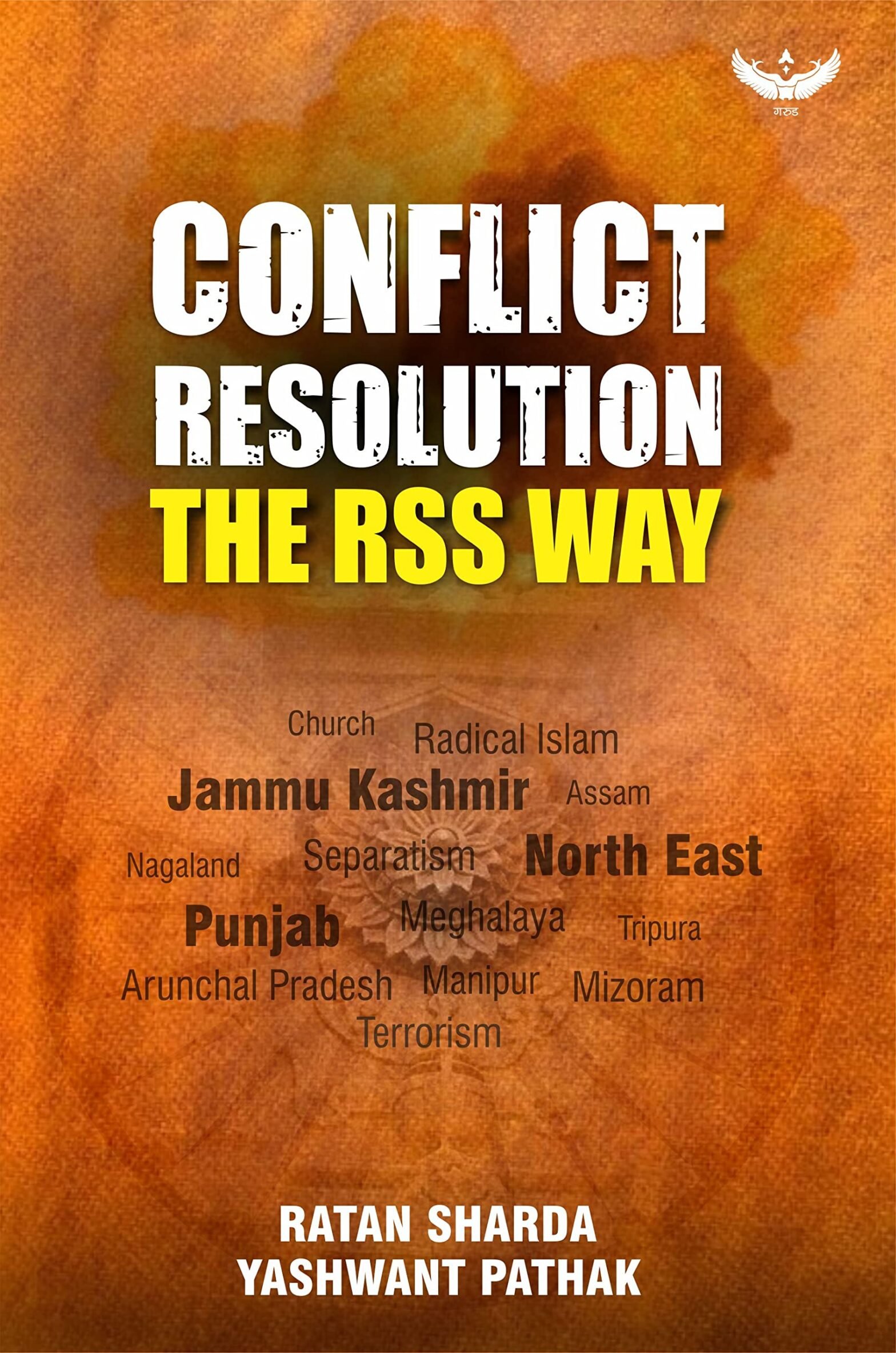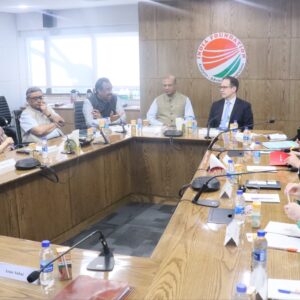Authors: Ratan Sharda and Yashwant Pathak
Published by: Garuda Prakashan private limited
Price: ₹ 549
Book Review by: Nidhi Bahuguna
The narrative, created around RSS, is that the organisation creates conflicts. The book, based on the PhD dissertation of Dr Ratan Sharda at the Hindu University of America, goes a long way in countering the false narrative. As mentioned in the forward by Shri Ved P. Nanda, a Padma Bhushan awardee, the book is important as it breaks the silence surrounding the RSS, which, as a practise, did not issue press statements until a few years ago.
The preface gives a much-needed look into the journey of RSS since its inception in 1925. It touches upon the rationale behind criticism of RSS, its philosophy and utilising RSS Resolutions analytically. The preamble deals with how the book has been written, giving a brief insight into insurgencies, both domestic and global.
The book is in essence three volumes, one volume each dealing with insurgencies in Kashmir, Punjab and North-east. The third volume on North-East has 2 sections. The entire book is deeply researched with copious references, delving deep into the causes of conflicts and the methodology adopted by the RSS towards conflict resolution.
Volume 1, dealing with Jammu and Kashmir, grips the attention of the reader as it brings out nuggets like Kashmir being the only state in India which has retained its original name in 4000 yrs of documented history. It details the stages of Kashmir disturbances, while deliberating in depth on the causative factors. It traces the role of RSS, which started its work in 1940 under Shri Balraj Madhok. The role of all political parties, failures of the political class and the unwavering focus of RSS through decades make for engrossing reading. Of significance is the manner in which the destruction of temples in J&K has been chronicled from 1986 to 1992, which brings out the extent of the tragedy that befell the nation during those dark times. Besides containing very valuable information on all events in J&K, the authors have also chronicled all the Resolutions of the RSS on J&K. It must be noted that the RSS was the only organisation that consistently raised issues of West Pakistan refugees, Valmikis, Gorkhas and gender and social injustice that prevailed in J&K. It was also the only organisation which extended help and support to the minority Hindu population, which was being victimised in the state.
Volume 2 deals with the disturbances and insurgencies that shook Punjab, and analyses the major factors which led to the same. The work of the RSS in Punjab, in supporting both Hindus and Sikhs, both pre and post partition is well documented. Partition holocaust, language issue and the demands for a Punjabi Suba are all discussed along with RSS views and support to Punjabi language. The RSS resolutions, all of which aimed to calm troubled waters are discussed in depth. The persecution of RSS and its unwavering efforts to maintain sanity through its Resolutions are well documented. The bravery of RSS, attacks on its Shakhas, the efforts via resolutions to boost Morale of Swayamsevaks are unknown to most Indians. The Book enlightens the reader on the nuances of the Khalistani movement and the criticality of Punjab and Hindu-Sikh unity.
The third volume deals with the North-East Region (NER). It describes the different races, culture and regions, while underlining the ancient connections the NER has with the rest of India. This volume has 2 sections. Section 1 deals with insurgencies in NER while section 2 deals with the Assam turmoil. Both the sections enumerate the various conflicts and the major causes for the same. The authors have enumerated RSS efforts in NER since 1950’s, even though work had begun in 1946, as the organisation was unfortunately banned during the interregnum. The challenges faced by RSS were numerous. Section 1 deals with issues of traditional rivalry between tribals, role of the church in fuelling insurgencies and persecution of non-Christians. The authors have described the resolutions of RSS with reference to underlining the basic unity between the tribal community and the Hindu society. The role of language, the effects of exodus from Bangladesh, religious conversions, role of Church are deliberated upon in depth, along with data of the conversions in NER. RSS resolutions on the Mizoram accord are also discussed in depth. The Chakma issue and the RSS efforts in providing relief and rehabilitation are described. Resolutions of RSS on foreign funding and church role are discussed in detail with data. RSS was in cross hairs of both the church and the terrorists, but RSS stood firm as could be deduced from its Resolutions.
Section 2 Dealing with the Assam turmoil analyses the pre partition language agitation and riots which became the foundation for post partition turmoils. RSS, which started operating in 1950, passed resolutions only after 10 years of understanding the ground situation and striking roots there. RSS resolutions stressed on the primacy of National security and solidarity above linguistic and regional issues. RSS understood and flagged the role of Bengali Muslims in displacing Bengali Hindus and forcing them to flee to West Bengal. The issue of illegal immigration of foreigners is deliberated at length, describing how in 1964 itself, RSS had passed a resolution sensing that Muslims from East Pakistan had potential to form a fifth column. RSS also made efforts to differentiate between illegal immigrants and persecuted refugees. Demographic invasion is proved via data, and the authors have enumerated the RSS resolutions highlighting the issues in Assam. Through unrelenting brave efforts, RSS has ensured that NER feels connected to rest of India, with the nation becoming aware of the dangers posed by illegal immigration, Islamist elements, Church supported separatism and support of the same by China and Bangladesh.
To conclude, the book is indeed an epic work. It traces the root causes of the insurgencies in 3 regions of India, chronicles events along with deep analysis, and explains the role of RSS and the effect of RSS Resolutions that helped to understand and find solutions to the decades old conflicts.
The book contains a treasure trove of fascinating information, not found in mainstream discussions about the insurgencies. All the information is referenced and is a researcher’s delight. The language of the book is easy and flowing and makes understanding complex issues very easy for the layperson.
The book is extremely engrossing. To the reader, uninitiated about RSS, the epic work enlightens about the selfless, dedicated service of the RSS towards the Nation. One ends the book with great respect for the RSS, in Conflict Resolution by working selflessly for decades in insurgency afflicted regions of India.
Author Brief Bio: Nidhi Bahuguna is a Freelance Author, Member, ‘Centre for Ladakh and Jammu Kashmir Studies’ (Previously JKSC) and Senior Research Fellow at Asian Eurasian Human Rights Forum (AEHRF).




